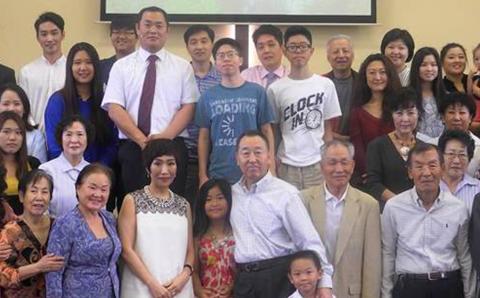Years ago, as a campus minister, I took a group of students on a “homeless ministry” nighttime walking tour of downtown Toronto. Our guide, who had ministered to people living on the streets of Toronto for years, exposed us to the harsh realities that people who are homeless face. I learned many things that night that no textbook or classroom could teach me. I learned not to define people who are homeless by their homelessness: they are not “the homeless” but are people, first and foremost, who happen to be homeless. I also learned to identify them by where they sleep. Someone who is homeless often sleeps in places that aren't designed for sleeping: by a doorstep, on a park bench, in a car.
That experience made me look at the Christmas nativity scene with new eyes. Nativity scenes often produce warm fuzzy feelings as we gaze on the serenity of baby Jesus lying in a manger. Our culture has domesticated the biblical story so much that we are no longer shocked by what we see or read. The manger was a box meant to hold animal feed, not babies. Jesus slept where babies were not supposed to sleep. Jesus was homeless.
His parents, Mary and Joseph, were temporarily displaced from their home by the Roman empire’s census decree forcing them to travel afar. If we get angry at people for not offering their seats to a pregnant woman on a crowded bus, then we should get angry at the folks in Bethlehem who failed to offer their beds to a young mother about to go into labor. Instead, they collectively passed the buck until someone gave Mary shelter in the ancient equivalent of a garage.
Seeing baby Jesus asleep in a feeding box should not fill us with warm sentimentality. We don’t feel that way when we see a person sleeping in a doorway, after all. Rather, it should make us sad and mad. Sad at the suffering of others, and mad that we live in a world where this is happening, and happening often—so often that we may have become numb to it. Have we become numb to the suffering of baby Jesus and Mary?
We often equate Jesus’ sufferings with his crucifixion on the cross. But if we really see the nativity for what it is, we should recognize that Jesus’ suffering began at birth. Jesus did not only suffer on the cross. Jesus suffered his disciples’ failures. He suffered the Pharisees’ opposition. He suffered the crowds and their demands. He suffered the Romans’ oppression. He suffered the loss of “equality with God” when he came in human flesh (Phil. 2:6). Jesus suffered his entire life, from birth to death.
Christmas reminds us that God is on a mission to reconcile all things to himself through Christ Jesus (Col. 1:20). The Almighty God, who could have chosen any number of ways to accomplish his mission, chose the way of suffering—in birth, life, and death. As we join in God’s mission, are we willing to suffer loss of privilege and power in order to truly serve the communities to whom God has sent us? Or do we fall into the worldly patterns of control, authority, and dominance, even as we seek to serve others?
This Christmas, may we see the nativity with new eyes and be transformed.
About the Author
Shiao Chong is the former editor-in-chief of The Banner. He served as editor from 2016 to 2025. He attends Fellowship Christian Reformed Church in Toronto, Ont.
Shiao Chong es el redactor jefe de The Banner. El asiste a Iglesia Comunidad Cristiana Reformada en Toronto, Ont.
시아오 총은 더 배너 (The Banner)의 편집장이다. 온타리오 주 토론토의 펠로우쉽 CRC에 출석한다.
You can follow him @shiaochong (Twitter) and @3dchristianity (Facebook).









